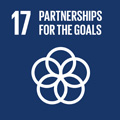- Docente: Paola Galletti
- Credits: 6
- SSD: CHIM/06
- Language: Italian
- Moduli: Paola Galletti (Modulo 1) Alessandro Girolamo Rombolà (Modulo 2)
- Teaching Mode: In-person learning (entirely or partially) (Modulo 1); In-person learning (entirely or partially) (Modulo 2)
- Campus: Ravenna
- Corso: First cycle degree programme (L) in Environmental Sciences (cod. 8011)
Learning outcomes
At the end of the course, the student will have a knowledge of the major classes of pollutants to air, water and soil and their sources. The student will know and predict the main degradation pathways and effects of an organic or inorganic substance introduced into the environment. The student will also know the natural cycles of major chemical elements and the main environmental chemical measures. Students will also know about the impact of novel technologies for the sustainable management of waters and energy.
Course contents
3 credits (24 hours) will be dedicated to topics related to organic
compounds of environmental interest.
The topics to be discussed are detailed below: the concept of
persistence and the evaluation of the lifetime of an organic
compound in the environment.
Partition of organic compounds between different environmental
compartments, vapor pressure, solubility in water, air-water and
octanol-water partition coefficients. The
process of absorption and water-solid partition.
Estimation of the mobility of organic matter and mean residence
times in the different compartments.
Nature and role of humic acids in the transport of organic
pollutants.
The chemistry of organic compounds in the atmosphere: photochemical
and radical reactions.
Atmosphere and organic pollutants: mechanisms of depletion of stratospheric ozone, the role
of chlorofluorocarbons; formation of tropospheric ozone and other
secondary pollutants, the role of the organic component in
photochemical smog, tropospheric oxidation of volatile organic
hydrocarbons.
Main classes of organic substances in the atmosphere, sources,
persistence and toxicity.
Aliphatic and aromatic hydrocarbons, polycyclic aromatic
hydrocarbons, particulate absorption.
Chlorinated compounds: polychlorinated dibenzo-1 ,4-dioxins,
polychlorinated dibenzofurans and polychlorinated biphenyls.
The industrial
accident in Seveso.
Greenhouse effect: mechanisms of absorption of infrared
radiation.
Main classes of organic pollutants in water and soil: sources,
persistence and toxicity. Hydrocarbons from oil spills, hydrocarbon
and chlorinated solvents from industrial activities, pesticides,
herbicides, surfactants, halogenated organic substances from
industrial and agricultural activities, organometallic
compounds. Gasoline additives and
oxygenates.
Main mechanisms of degradation of organic compounds in water and
soil: reactions of hydrolysis, photolytic processes, redox
reactions, microbiological degradation.
2 CFU (16 hours) will be dedicated to the following topics of environmental analytical chemistry: reference Materials in Analytical Chemistry, soils and sediments: composition, chemical properties, pollution, sampling, and analytical methods, indoor and outdoor air: micropollutants, atmospheric particulate matter, particulate matter and air sampling methods, analytical methods, water: classification, pollution, sampling, and analytical methods.
The laboratory (1CFU, 12 hours) will provide activities related to
the topics covered in lectures. It will take place in Ravenna in
the laboratories of chemistry within the Environmental Sciences
laboratories "R.Sartori".
Students will work in
small groups and at the end of the lab will produce a brief written
report
Readings/Bibliography
Lecture notes
S. E. Manahan, Chimica dell'ambiente, Piccin
B. Rindone, Introduzione alla Chimica Ambientale, Città Studi Edizioni
R. P. Schwarzenbach, P.M. Gschwend, D. I. Imboden, Environmental Organic Chemistry, Wiley Interscience
R. A. Larson, E. J. Weber, Reaction mechanisms in environmental organic chemistry, Lewis Publishers
Teaching methods
Lessons and discussion.
Practical laboratory training.
As concerns the teaching methods of this course unit, all students must attend Module 1, 2 [https://www.unibo.it/en/services-and-opportunities/health-and-assistance/health-and-safety/online-course-on-health-and-safety-in-study-and-internship-areas] online, while Module 3 on health and safety is to be attended in class. Information about Module 3 attendance schedule is available on the website of your degree programme
Assessment methods
The exam is oral and concurrent for both modules.
The end-of-course exam aims to assess the achievement of the learning objectives and verify the student's ability to apply their knowledge and make the necessary logical-deductive connections.
The final course grade is determined by the average of the grades obtained in three specific questions on topics related to the main objectives of the course.
The student must therefore demonstrate:
- Knowledge of the main classes of pollutants in the atmosphere, water, and soil, and their sources.
- Knowledge of and prediction of the main degradation pathways and effects of an organic or inorganic substance released into the environment.
- Knowledge of the natural cycles of the main chemical elements and the main environmental chemical measures.
Final grade:
Preparation on a limited number of topics covered in the course that emerges only with the lecturer's assistance, generally correct language expression → 18-24;
Preparation on a large number of t opics covered in the course, ability to make independent choices of critical analysis, mastery of specific terminology → 25-29;Substantially exhaustive preparation on the topics covered in the course, ability to make independent choices of critical analysis and connection, full mastery of specific terminology and ability for argumentation and self-reflection → 30-30L.
Teaching tools
Lecture slides
Students with learning disorders and\or temporary or permanent disabilities: please, contact the office responsible (https://site.unibo.it/studenti-con-disabilita-e-dsa/en/for-students ) as soon as possible so that they can propose acceptable adjustments. The request for adaptation must be submitted in advance (15 days before the exam date) to the lecturer, who will assess the appropriateness of the adjustments, taking into account the teaching objectives.
Office hours
See the website of Paola Galletti
See the website of Alessandro Girolamo Rombolà
SDGs




This teaching activity contributes to the achievement of the Sustainable Development Goals of the UN 2030 Agenda.
